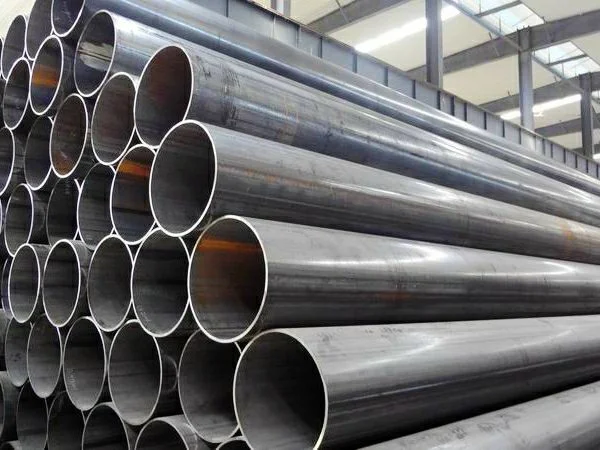Submerged arc welding process of steel pipe
The submerged arc welding process is suitable for the requirements of heavy industrial applications such as pipelines, pressure vessels and tanks, locomotive manufacturing, heavy construction, and excavation. It is suitable for industries that require high productivity, especially those involving very thick materials, and can be buried from There are many benefits obtained in the arc welding process. Its high deposition rate and walking speed have a significant impact on the productivity, efficiency and production cost of workers. This is also one of the key advantages of the submerged arc welding process. Other benefits include: Excellent chemical composition and mechanical properties, improved working environment comfort and good weld shape and weld toe line.

Submerged arc welding is a wire feeding mechanism that uses granular flux to separate the arc from the air. As the name suggests, the arc is buried in the flux, which means that after the parameters are set, the arc is invisible with the outflow of a layer of flux. , The welding wire is continuously fed in by the welding torch that moves along the welding seam, and the arc heats and melts a section of welding wire, part of the flux and the base metal, forming a molten pool, which condenses to form a weld seam with a layer of welding slag. The thickness of the welding material is 1/ 16,-3/4, can be 100% penetration welding by single pass welding. If the wall thickness is not limited, multi-pass welding can be carried out. The welding seam should be properly pretreated, and the appropriate combination of welding wire and flux should be selected.
Selection of flux and wire
Choosing the right flux and welding wire for a specific submerged arc welding process is very important to obtain good results. Although the submerged arc welding process itself is efficient, it can increase production efficiency based on the welding wire and flux used. The flux is not only effective in the welding pool. It plays a protective role and helps to increase the mechanical properties and productivity of welding. The formula of the flux affects the current-carrying capacity and slag release. The current-carrying capacity means that high deposition efficiency and high-quality weld profile can be obtained, and the melting of specific fluxes Slag release will affect the choice of flux, because some fluxes are more suitable for certain welding designs.
The flux choices for submerged arc welding include active and neutral types of welding. One basic difference is that the active flux changes the chemical properties of the weld, while the neutral flux does not change. The active flux is characterized by containing silicon and manganese, which help to maintain The tensile strength of the weld under high heat input helps the weld to remain smooth and smooth at high travel speeds, and provides good slag release capabilities. In general, active flux can help reduce the risk of poor welding quality. As well as expensive post-weld cleaning and rework, but remember that active flux is usually suitable for single-pass or double-pass welding. Neutral flux is more suitable for large-scale multi-pass welding because it helps avoid brittle and crack-sensitive welds. Sew.
There are many choices of welding wire for submerged arc welding, each has advantages and disadvantages. Some welding wires are formulated for welding under high heat input, while other welding wires are specially designed to have an alloy that helps the flux to clean the welding. Please note that: The interaction between the chemical properties of the welding wire and the heat input will affect the mechanical properties of the weld. The choice of filler metal can also greatly increase the productivity. For example, compared with the use of solid welding wire, the use of metal cored welding wire with submerged arc welding technology can melt the weld. The coating efficiency is increased by 15% to 30%, while providing a wider and shallower penetration profile. Due to its high travel speed, the metal cored wire can also reduce the heat input to reduce the risk of welding deformation and burn-through.






